ENEMIES OF ROME 8.1 - ALARIC - Let's Goth to Rome
Enemies of Rome is back after long months of silence. Hope you'll like this series about Alaric... It's a long post. Better make yourself a cup of your favorite tea or coffee, kick back, enjoy and apologies for the typos. Even if i've been 2 weeks preparing it, some have probably sneaked inside no matter what.
***********************************************************************************
In 410, Rome was besieged, conquered and sacked... The conqueror of the Eternal City was not a clever Hannibal, nor a fancy Persian Emperor but the leader of a troop of barbarians pushed by the tide of history on the borders of the Roman Empire to ratify its decline and fall. Alaric didn't care much about History though. He just didn't like to be a tool in the hands of the Romans, and unwittingly became one in the hands of God.
The New Neighbours
The Goths knew they could not defeat the vaunted Legions. The Romans knew the Goths were too numerous to subdue and annihilate, and liked to hire them as mercenaries, as recounted by Jordanes:
Now it had long been a hard matter for the Roman army to fight against any nations whatsoever without them . This is evident from the way in which the Goths were so frequently called upon.
It looked like nothing could really break this balance... Until the Huns came.
Here come the Huns
The Goths were directly in the path of the invaders, so they did the best that they could think of: they asked the Romans for help, as said Jordanes:
After long deliberation by common consent they finally sent ambassadors into Romania to the Emperor Valens, brother of Valentinian, the elder Emperor , to say that if he would give them part of Thrace or Moesi a to keep, they would submit themselves to his laws and commands.
The Emperor Valens (who was an Arian Christian) readily accepted. Busy in a war with the Persians, he knew he could do with the extra manpower and tax base provided by that offer.
However, according to Jordanes, to welcome and manage the huge amount of people (between 100000 and 200000) into Dacia and Lower Moesia and Thrace, he appointed two officials by the name of Lupicinus and Maximus, who quickly made a mess of it all:
The generals , swayed by avarice , sold them at a high price not only the flesh of sheep and oxen, but even the carcasses of dogs and unclean animals , so that a slave would be bartered for a loaf of bread or ten pounds of meat.
Worse: when the Goths could not pay anymore, the Romans proposed them to buy up their children. This is the kind of things that Alaric experienced firsthand at the hands of the Romans. Belonging to a noble family, Alaric was not directly affected, but he probably witnessed it first hand.
Of course, the Goths started to resent that treatment. They grew rebellious, to the point where the governor Lupicinus decided to set a trap: he invited the leader of the Thervingi Goth (Fritigern) to a banquet in Marcianopolis, and there his men started butchering his entourage. But the plot backfired spectacularly: Fritigern was able to fight his way out of the trap, escaped from the town and joined his people.
Thus these valiant men gained the chance they had longed for—to be free to die in battle rather than to perish of hunger—and immediately took arms to kill the generals Lupicinus and Maximus .
The gloves were off: the Goths broke the treaty they had signed with the Romans and started rampaging through the countryside.
Adrianople
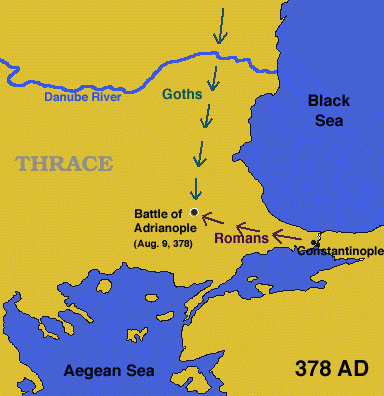
As soon as Valens heard about the news, he sent a vanguard force to contain the damage while he extracting himself from the war with Persia and take the bulk of his army up to Thrace. The vanguard was initially successful in holding off the Goths. Having divided themselves into countless raiding parties, the Goths were easy prey for the Romans, forcing Fritigern to recall and regroup all his troops in one place.
By the end of 378, Valens at long last arrived in the vicinity of Adrianople. He had a great army, but made the fatal mistake of not waiting for reinforcements:
However, the fatal obstinacy of the emperor prevailed, fortified by the flattery of some of the princes, who advised him to hasten with all speed, so that Gratian might have no share in a victory which, as they fancied, was already almost gained.
Instead of being remembered as the slayer of the Goths, Valens would earn the notorious legend of heading his forces into a total disaster: the Goths routed the cavalry and annihilated the infantry of the Romans in a complete and shocking victory. Or, as Ammianus Marcellinus puts it:
Nor, except the battle of Cannæ, is so destructive a slaughter recorded in our annals
Valens himself was killed in the battle and his body never recovered.
Stalemate
The Goths were now officially the masters of everything south of the Danube. Unfortunately for them, they were still completely at a loss when it came to besieging a city, so they could not take Adrianople, nor Constantinople, and settled on raiding and plundering rich estates in the Balkans.
The looting was so complete that the Greuthungi split from the Thervingi, invaded Illyricum and were settled into Pannonia by Gratian. The Thervingi, them, kept raiding and plundering Macedonia and the Balkans. They still could not deal with fortified towns but the local governors were terrified enough to pay tribute to be left to their own device and it's not only 380 and the combined push of Gratian and Theodosius (the new Roman Emperor in the East) that the Goths saw the writing on the wall and accepted to negotiate.
The peace was signed in 382: since the Romans were unable to defeat them, the Goths were recognized as foederati and were given land inside the Roman Empire. But there was a trick: rather than being subdued and incorporated as Roman citizens, they would remain essentially Goths... Something which would come back to haunt the Romans for the decades to come.
In hindsight, the Gothic Wars were a huge missed opportunity for the Romans, a slow and costly trainwreck. Greed and short-sightedness allowed the relations with potential ally to fester to a point of no-return. The peace was nothing more than an uneasy truce. It was probably a long and interesting lesson for the young Alaric, who witnessed first hand the disaster of Adrianople, the demise of an Emperor and the ravaging of a good portion of the Empire.

SOURCES
http://www.gutenberg.org/files/28587/28587-h/28587-h.htm
https://archive.org/stream/gothichistoryofj00jorduoft/gothichistoryofj00jorduoft_djvu.txt
http://epublications.marquette.edu/cgi/viewcontent.cgi?article=1007&context=dittman
http://www.ccel.org/g/gibbon/decline/volume1/chap26.htm
PREVIOUS “ENEMIES OF ROME” EPISODES
Boudicca - The Warrior Queen
Zenobia - The new Cleopatra
Sertorius - The Last Man Standing
Vercingetorix - One man to rule them all
Arminius - Magna Germania
Genseric - The Vandals are Coming

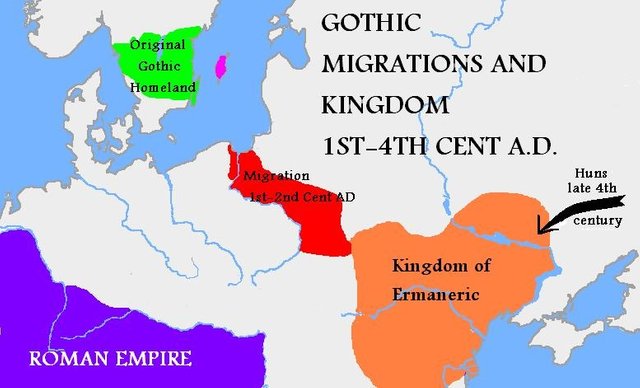
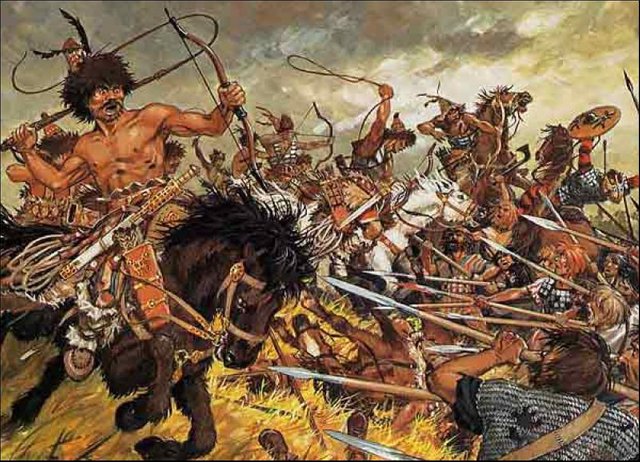
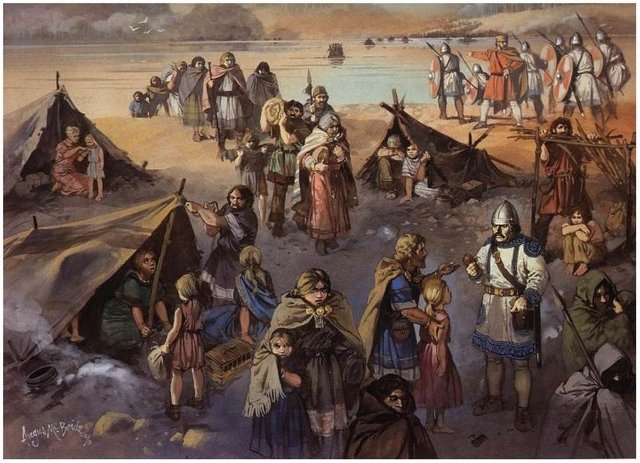

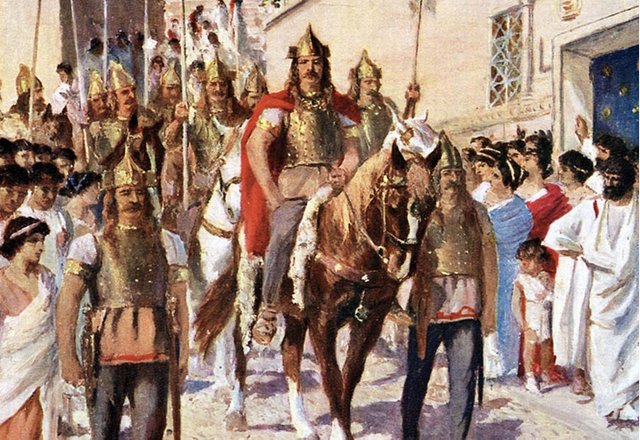
This looks good. Bookmarking reading after work!
I appreciate that :) Better keep it for later than just reading it in diagonal :P
your history really good.i am reading the history fully this time.your history to read i know alot of thing.thank you very much for your learning history@herverisson..
Thanks!
It was the beginning of the end for the western part of the Roman empire. The Goths coming through showed the weakness in the Roman organization of borders and provinces. And money reserves dwindling. I like the post cant wait for the next part of seires.
Thanks @zija2022! Indeed, tough times ahead for the Romans!
I wonder if the Goths would proud of the subculture that shares their name today? Probably not...
hahaha probably not... At least they can be proud of the Gothic architecture... Even if they have nothing to do with it either ^^